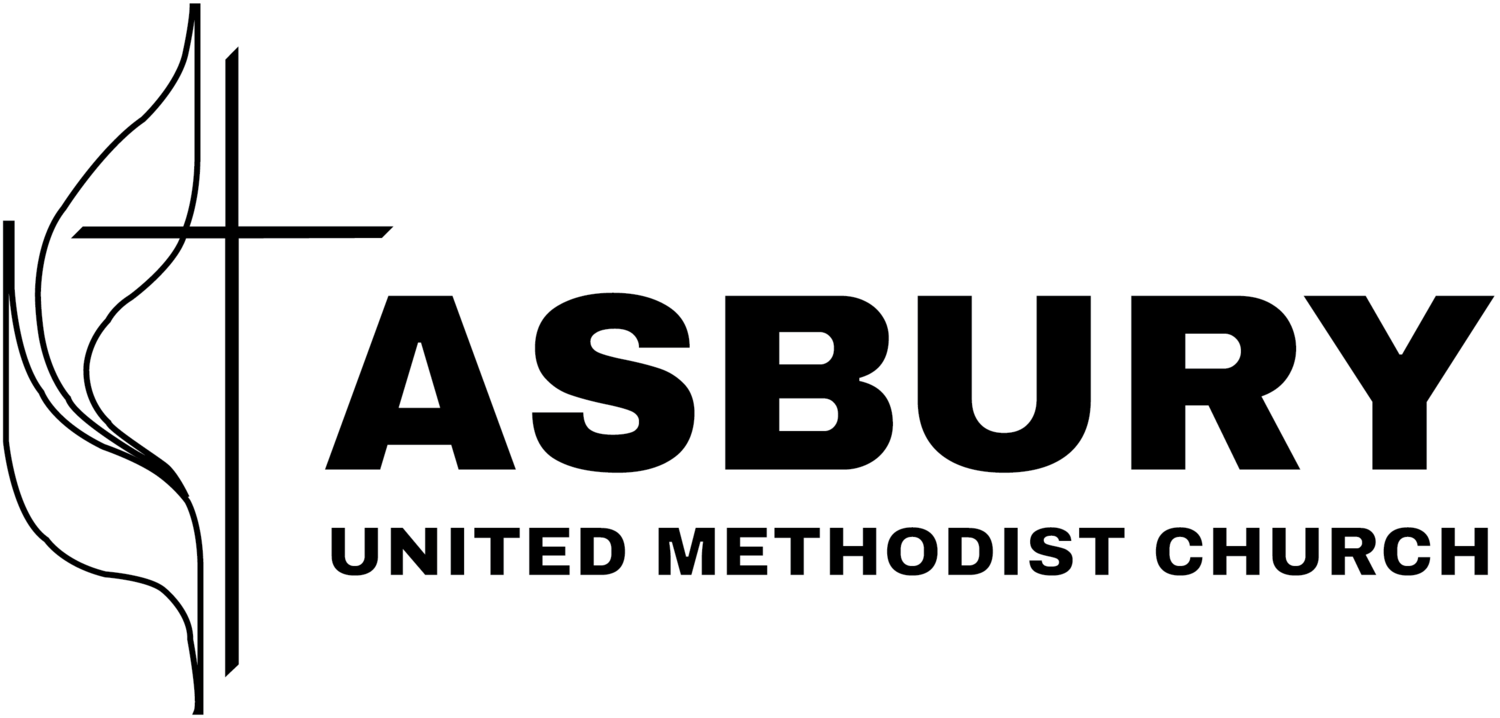
Asbury’s Stained Glass Windows and Tablets
Asbury Tablets
The symbols in these 10 tables depict creation through the spread of Christianity to the New World. They were designed and made by Dr. Arnold in 1961 for his home on George Street. In 1971 Dr. Arnold suggested these designs be the inspiration for the two ribbon windows in the Sanctury.
The Christ Window
Designed in 1971 and installed by Willet Hauser, this window uniquely displays the image of Christ from the outside with mosaic tiles attached to the mortar between the pieces of glass. From the inside with light coming through the colored glass we see Christ in the center and symbols around him depicting the 12 disciples. Scan the QR code for the whole story
Asbury’s Stained Glass Windows and Tablets
Ten tablets leading to the Memorial Garden
In 1971 Asbury began the process of planning our sanctuary and knew early on that stained glass was to be an integral part of the building. Dr. Irving Arnold, who had retired to Maitland after serving as a Methodist pastor in New England for fifty years, lived on George Street (one block north of Asbury) and designed, build, and installed 10 tablets at his home as a walkway. These tablets told the story of Christianity in symbols from Creation to John Wesley (as outlined below).
As part of the window design team in 1971, Dr. Arnold suggested that the tablets could be the inspiration for the two ribbon windows on each side of the sanctuary – the lakeside windows depicting Creation to the Roman occupation of the Holy Land (Old Testament) and the courtside windows depicting the birth and resurrection of Jesus and the expansion of the Christian faith in the world (New Testiment) and ending with the New World and John Wesley.
The tablets were in the Church courtyard for many years and are now being repurposed as the pathway to the Memorial Garden in our Lakeside Park. The tablets are chronological as noted below:
Old Testiment
1. God’s Creation
a. Symbols: Sun, Moon, Stars
2. Pastoral Period (Genesis)
a. Symbols: shepherds crook and staff
b. Abraham appears.
3. Conquest of Canaan (Joshua)
a. Symbols: Sword and Trumpet
b. Conquest of Holy Land by Joshua
4. Building of the Temple (1st and 2nd Chronicles)
a. Symbols: Pillars of Solomon’s Temple, Solomon’s crown, Torah
b. Before his death, David began to gather materials to build a great temple. Solomon,
his son, build the first great temple in Jerusalem after his father’s death.
5. Babylonian Captivity (Jeremiah, 2nd King, Daniel)
a. Symbols: chains of captivity, candles, scroll containing Oid Testament Scriptures
b. In 605 BC Nebuchadnezzars led his army against Jerusalem. He laid siege to the city and after capturing it took many captives to Babylon. The candles represent the treasure sacked from the temple. In the next several years, Neuchadnezzar led his army twice against the Holy City. In 538 BC Cyrus freed the Jewish captives. The scroll is representative of the Israelite’s continuing faith in God’s deliverance.
New Testiment
6. Birth and Resurrection of Jesus (Matthew, Mark, Luke)
a. Symbols: Star of David, Shepherd’s crook and staff, Easter sunrise, Empty cross
b. Two events are symbolized on this tablet: The birth of Jesus and the resurrection of Christ. The star of David and the Shepherd’s crook and staff are symbolic of Jesus’ birth. The Easter sunrise and empty cross are symbolic of His resurrection and the Dawn of New Life.
Christian History
7. Spread of Early Church
a. Symbols: small sailing ship
b. The only effective means of early travel were by foot or using small ships to transverse the Mediterranean sea. The Apostles and early missionaries traveled extensively for the first few centuries after Christ’s resurrection as depicted by the empty cross.
8. Crusades
a. Symbols: Crusader’s shield, Christian symbol of fish, staff topped by the cross.
b. Many Christian military expeditions were led to recover the Holy Land from the Mohammedans between the years 1096 and 1272. The fish has long been a recognized symbol for Christ. The fish symbol was frequently used in early Christian literature and art. The fish is also the symbol for Baptish.
9. Great Cathedrals and Universities
a. Symbols: Cathedrals in lower right corner, book of knowledge in lower left corner, university, or college in the background.
b. Many great cathedrals were built in Europe over a five-hundred-year period starting in about the eleventh century. In many cases a great university was associated with these. The church was the leader in higher education.
20th Century Church & Beyond
10. The Church Flourishes
a. Symbols: Pyramid, circles in pyramid, Christian cross, plant branches to each side of the
pyramid.
b. This tablet shows the world, Eastern and Western Hemispheres, united under the cross of Christ. The pyramid is representative of the Trinity and Power. The growing branches represent a flourishing Christianity both now and in the future.
In 1971/1972 Asbury built the sanctuary and the window design team, with Dr. Arnold as a member, elected to use these ten tablets as the inspiration for the two ribbon windows on each side of the sanctuary. Many of the original symbols are in the windows, which also depict the story of creation though the Roman conquest of the Holy City on the lakeside window; and the birth and resurrection of Christ through John Wesley on the window facing the courtyard.
